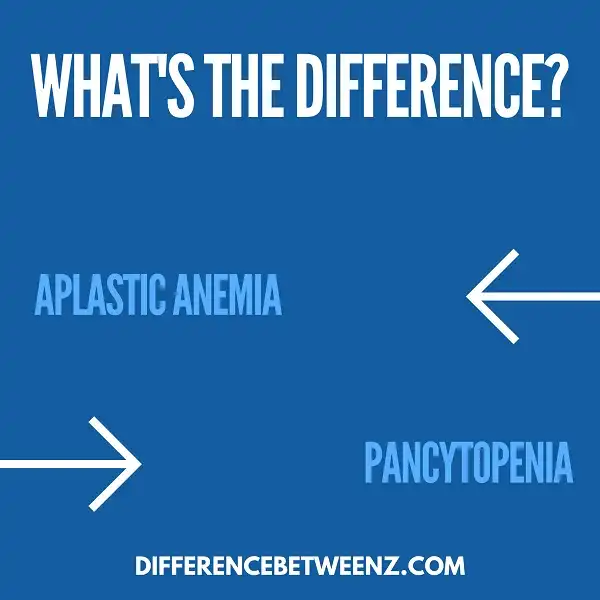Aplastic anemia is a condition in which the bone marrow and the hematopoietic stem cells fail to produce enough blood cells. The three main types of blood cells are erythrocytes (red blood cells), which carry oxygen; thrombocytes (platelets), which are needed for blood clotting; and leukocytes (white blood cells), which fight infection. Aplastic anemia can be acquired (due to certain medications or infections) or inherited. It can also occur as a result of cancer treatment. Pancytopenia, on the other hand, is a condition characterized by a decrease in the number of all three types of blood cells. Unlike aplastic anemia, pancytopenia can never be considered a normal finding. Aplastic anemia and pancytopenia are both serious conditions that can be life-threatening. Treatment typically involves transfusions of red blood cells and platelets, as well as support for infection. In some cases, a bone marrow transplant may be necessary.
What is Aplastic Anemia?
Aplastic anemia is a condition in which the bone marrow and the blood cells it produces are damaged. This can lead to a decrease in all three blood cell types: red blood cells, white blood cells, and platelets. Aplastic anemia can be caused by certain medications, infections, autoimmune diseases, and exposure to chemicals or radiation. It can also occur for no known reason. Aplastic anemia can be mild, moderate, or severe, depending on how many blood cell types are affected. Aplastic anemia is treated with medication, transfusions, or stem cell transplantation. The severity of the condition will determine the course of treatment. Aplastic anemia can be a serious condition, but with proper treatment, most people with the condition can lead normal lives.
What is Pancytopenia?
Pancytopenia is a medical condition that results from a deficiency of all three major types of blood cells: red blood cells, white blood cells, and platelets. This can lead to a variety of symptoms, including fatigue, increased susceptibility to infection, and easy bruising or bleeding. Pancytopenia can be caused by a number of underlying conditions, such as cancer, liver disease, or bone marrow failure.
Treatment typically involves addressing the underlying condition and providing supportive care to manage symptoms. In some cases, a bone marrow transplant may be necessary. Pancytopenia is a serious condition that can be life-threatening if not properly managed. Early diagnosis and treatment is essential for the best possible outcome.
Difference between Aplastic Anemia and Pancytopenia
- Aplastic anemia is a condition in which the bone marrow and the hematopoietic stem cells fail to produce enough blood cells. The three main types of blood cells are erythrocytes (red blood cells), which carry oxygen; thrombocytes (platelets), which are needed for blood clotting; and leukocytes (white blood cells), which fight infection.
- Aplastic anemia can be acquired (due to certain medications or infections) or inherited. It can also occur as a result of cancer treatment. Pancytopenia, on the other hand, is a condition characterized by a decrease in the number of all three types of blood cells.
- Unlike aplastic anemia, pancytopenia can never be considered a normal finding. Aplastic anemia and pancytopenia are both serious conditions that can be life-threatening. Treatment typically involves transfusions of red blood cells and platelets, as well as support for infection. In some cases, a bone marrow transplant may be necessary.
Conclusion
If you are experiencing any of the symptoms of aplastic anemia or pancytopenia, it is important to seek medical help as soon as possible. While both conditions can be serious and life-threatening, they are also treatable. The sooner you get treatment, the better your chances for a full recovery.


